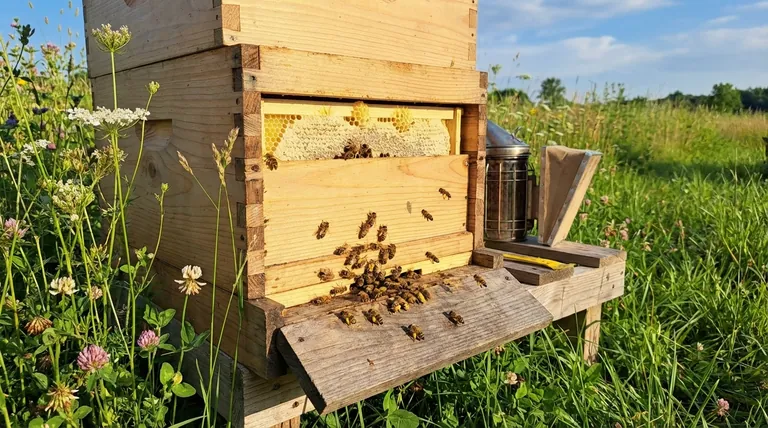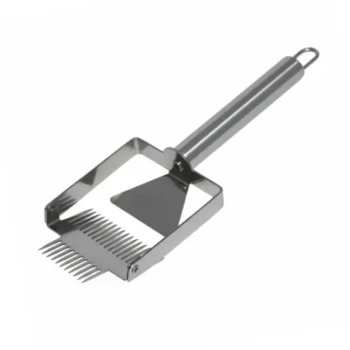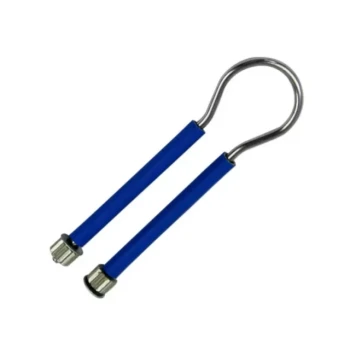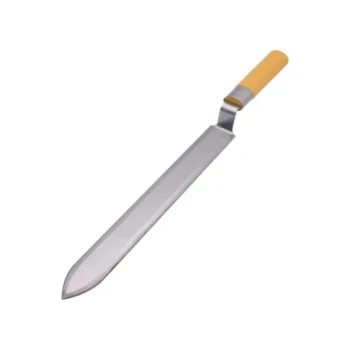It is almost always unreasonable to expect a new honeybee colony to produce a harvestable surplus of honey in its first year. A new colony's energy is not directed at creating excess for you; it is consumed by the frantic, all-encompassing task of building a viable city, raising a population, and stockpiling just enough food to survive its first winter. This is a period of intense investment, not of surplus production.
A first-year colony prioritizes survival and establishment, not surplus honey production. Its energy is channeled into the costly tasks of construction and population growth, which consume nectar resources rather than storing them as an excess you can harvest.

The Colony's First-Year Priorities
A new package or nucleus of bees is like a small group of settlers arriving in a new land with nothing but the tools on their backs. They have three monumental, energy-intensive tasks that must be completed before the arrival of winter.
The Massive Cost of Construction
A new colony begins with a mostly empty box. The bees must immediately start producing wax and drawing out honeycomb from scratch.
This is an incredibly resource-intensive process. Bees consume significant amounts of nectar just to produce the wax flakes needed to build the hexagonal cells that will house their young and store their food.
Building a Workforce
A small, initial population cannot gather a surplus of resources. The queen's primary job is to lay thousands of eggs to rapidly build the colony's population.
This requires a huge investment from the existing workers. Nurse bees must consume pollen and nectar to feed the developing larvae, using up resources that might otherwise be stored as honey. The colony is funneling all incoming food into population growth.
Stockpiling for Survival, Not Surplus
The honey you harvest is called a surplus—it's what is left over after the bees have stored everything they need to survive the winter. A first-year colony's goal is simply to meet that winter survival threshold.
They are not working to fill a third or fourth box for you. They are fighting to fill the one or two boxes they need to keep the cluster fed and warm through the cold months when no food is available.
Understanding the Trade-off: Your Honey vs. Their Survival
Taking honey from a first-year colony is not just taking their surplus; it is often taking their essential winter provisions. This decision has significant consequences and is a common mistake for new beekeepers.
The Risk of a Weak Winter Cluster
A colony needs a substantial amount of honey to fuel the metabolic activity required to keep the winter cluster warm.
Removing their food stores means they may not have enough energy to survive a long, cold winter, leading to starvation and the complete loss of the colony.
Slowing Future Growth
Even if the colony survives after you've taken honey, it will be weakened. It will emerge in the spring with a smaller population and depleted resources.
This sets the colony back for its second year, delaying its ability to become a strong, productive hive capable of producing the large honey harvests you are hoping for.
Forcing Unnecessary Work
Bees are efficient. In their first year, their goal is to build up and then conserve energy for winter.
If you take their stores, you force them to continue foraging intensely late into the season when they should be preparing the hive and settling into their winter configuration. This adds significant stress to the colony.
How to Manage Your First-Year Colony
Your goal as a beekeeper in the first year is not to be a harvester, but a facilitator. Your job is to give the bees the best possible chance to establish themselves and thrive.
- If your primary focus is long-term colony health and sustainability: Do not plan to take any honey in the first year and monitor their food stores, preparing to feed them if they are light heading into fall.
- If you are in an exceptional environment and the colony is booming: Only consider harvesting if the bees have completely filled two deep brood boxes and have started storing significant excess in a third box, and even then, take only a minimal amount.
By prioritizing their needs in year one, you are setting the stage for strong, productive colonies and abundant harvests in the years to come.
Summary Table:
| First-Year Priority | Why It Consumes Resources | Impact on Honey Production |
|---|---|---|
| Comb Construction | Bees consume nectar to produce wax for building honeycomb. | Directly uses incoming nectar, leaving little surplus. |
| Population Growth | Food is used to raise thousands of new bees to build the workforce. | Resources are invested in future foragers, not stored honey. |
| Winter Stockpiling | The colony's goal is to store just enough honey to survive the winter. | Any stored honey is for survival, not for beekeeper harvest. |
Set your new colonies up for long-term success with the right supplies from HONESTBEE. As a commercial apiary or beekeeping equipment distributor, you understand that a strong foundation is key to future honey production. HONESTBEE supplies the durable, high-quality beekeeping equipment your operations need to support healthy, thriving hives from day one. Contact our wholesale experts today to discuss how our supplies can help your colonies build a strong foundation for abundant harvests in the years to come.
Visual Guide

Related Products
- Plastic Queen Bee Catcher Marker Tube Holder for Queen Marking Bottle
- Commercial Grade Vertical Electric Bee Sweeper for Bee Removal
- All Stainless Steel Double Sided Pivoting Honey Uncapping Fork
- Adjustable Stainless Steel Honey Uncapping Fork with Scraper for Beekeeping
- Ventilated Adult Beekeeping Helmet Hat for Beekeepers
People Also Ask
- What is the purpose of a queen catcher in beekeeping? Safely Handle Your Queen Bee
- How can queen marking benefit small-scale beekeepers? Boost Efficiency & Hive Health
- What is the goal of queen marking? Boost Hive Management Efficiency & Colony Health
- When is the best time to mark a queen bee? Ensure Colony Success with Proper Timing
- What tools and skills are needed to mark a queen bee? Master the Art of Safe & Effective Queen Marking



















